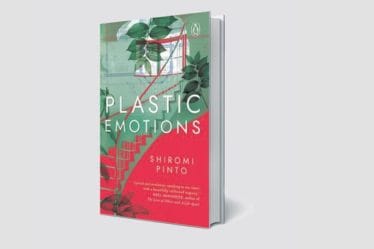What makes Plastic Emotions a worthy read is its heroine, Sri Lanka’s first modernist architect Minette De Silva. Sharomi Pinto was apparently troubled by the fact that so little is known about this very talented feminist icon of 20th century Sri Lanka. She considers it unjust to the point of being offensive that a woman of such unquestionable intelligence and artistic integrity must be lost in history’s obscurity.
So, Pinto chooses to sing a paean of praise about this unsung character who lived largely by her own rules. Her dexterous narrative technique weeds out every possible loose end of the gripping tale to delineate De Silva’s persona as she was in life — a visionary architect characterised by grit and driven by ambition. She had little to do with society as society had little control over her free spirit — her numerous relationships with men without the primary objective of marriage made her a non-conformist of then social mores and way ahead of her time.
Plastic Emotions, partly an epistolary novel, outlines De Silva’s life through letters, newspaper articles and telegrams exchanged with Le Corbusier – “the architect” in the novel – and with her dear friend Mimi.
The reader will also sense a subtle romance in most of the places Pinto describes. We are in for a whirlwind tour of Sri Lanka — first we head to Kandy, with its lush hills, and then to Colombo with its bourgeoisie. Back in India, we are taken to Chandigarh to marvel at its graceful modernist buildings. In Paris and London, we are surrounded by the glamourous bohemians.
From the very outset, the reader realises that the heroine is a modernist visionary. De Silva understood that her country requires a utilitarian urbanism. Her resolve to fuse modernist architecture with traditional craftsmanship is aptly depicted in the novel.
The communal divide that characterised Sri Lanka’s society is woven deftly into the novel with ample instances of Tamil ambivalence and Sinhalese nationalism. What’s intriguing is that in spite of belonging to an upper class family, De Silva remained largely unacquainted with an affluent lifestyle. She had to overcome challenges to get work and commissions.
Even though her frustrations shown here border on reality, Pinto created her heroine’s privileged ennui because she wanted to make a point about the architect’s status. It is interesting to note that though she was an elite and thus, by default, had the chance to remain aloof from the negative aspects of Ceylon’s burgeoning crisis, she didn’t. However, the focus remains largely on her relationship with French architect Le Corbusier. It is written as a passionate, long-distance love story.
The letters seem to capture the distinct temperaments of the two figures, and their desires and anguishes. However, the makeup of their desires seems to be foggy, Le Corbusier, for the most part, is distant while Minnette de Silva is almost clingy.
In the letters she exchanged with Le Corbusier, he addresses her affectionately as “oiseau” and she calls him “Corbu”. Pinto never makes it clear exactly how closely the novel is inspired from real life. Le Corbusier was married but not always faithful, and De Silva’s letters imply a fierce attachment to the man she thought of as her guide. Ironically, after reading Pinto’s narrative the reader realises that “truthfulness” of the romance doesn’t matter.
